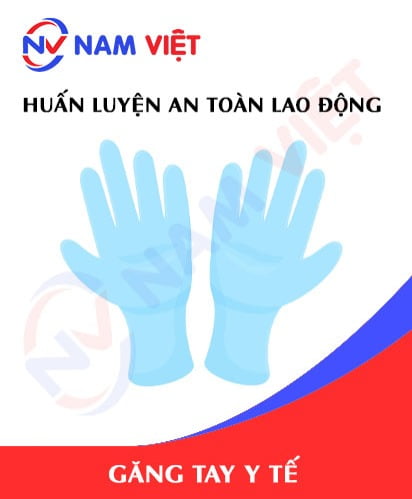Occupational Safety Training for Solar Panel Manufacturing
99,000 ₫
Note: The above price is calculated for one person, the price may fluctuate depending on the number of trainees participating in the course and the market movement. For more accurate price support, please refer to the price list or contact our consulting staff directly.
Occupational safety is an important issue in factory manufacturing solar panels and needs to be addressed promptly to ensure the health and safety of workers, enhancing the reputation of businesses. The Occupational Safety Training course is one of the effective solutions to raise awareness of how to prevent occupational accidents for workers participating in solar panel manufacturing.
Table of Contents
Toggle1. Overview of Solar Panels
a. What is a solar panel?
- A solar panel is a device that converts energy from sunlight into electricity. Solar panels are made of semiconductor materials, usually silicon, which are cut into thin slices and stacked to form solar cells. When ultraviolet rays from sunlight hit the solar panel, electrons in the semiconductor material are excited and move, generating a direct current. Solar panels are used to provide energy for electronic devices, houses, industrial facilities, street lights, pumps, solar power systems, and other applications.
- Currently, the solar panel manufacturing industry in Vietnam is developing significantly. According to the Vietnam Solar Energy Association (SolarBK), domestic solar panel production reached nearly 10 GW by the end of 2020.
- Additionally, the Vietnamese government has introduced and continues to implement policies to encourage and support the solar panel manufacturing industry, such as solar power purchase programs, funding for renewable energy projects, and investment programs to develop renewable energy, among others.

b. Machinery for solar panel manufacturing
There are many types of machinery used in solar panel manufacturing. Here are some of the most common machines in the solar panel manufacturing process:
- Plasma cutting machine: A precision cutting machine used to cut large solar panel sheets into different sizes and shapes.
- Panel laminating machine: Used to laminate solar cells into a single large panel. This machine uses heat and pressure to press the cells together.
- Panel coating machine: Applies a scratch-resistant coating on the surface of the solar panel.
- Panel testing machine: Used to check the quality of solar panels after production. It measures electrical parameters such as voltage and current to ensure the panel works as expected.
- Solar coating machine: Applies a reflective layer on the panel surface to enhance efficiency by reflecting sunlight back onto the panel.
These are just some of the most common machines in solar panel manufacturing. Depending on production scale and technology, manufacturers may use other machines as well.

c. Notable solar panel manufacturing companies
Currently, Vietnam has several highly-rated solar panel manufacturing companies in the region. Notable companies include:
- SolarBK Holdings – One of the leading solar energy product manufacturers and distributors in Vietnam. The company produces high-tech solar panels certified by reputable organizations such as TUV Rheinland.
- VietSolar – Produces solar panels, solar cells, and other solar energy products in Vietnam, using advanced technology for durable and efficient products.
- Sunseap – A Singaporean company with a base in Vietnam, specializing in solar panels, energy storage solutions, and installation services.
- Hoa Binh Solar – One of Vietnam’s top companies specializing in solar panels and other solar products, investing heavily in production technology and quality.
- SolarGATES – A leading solar panel manufacturer in Vietnam, using advanced technology to produce highly durable and efficient products.
- First Solar – Expanded operations in Vietnam since 2019 by building a solar panel factory in Tay Ninh, Southern Vietnam, covering 65,000 m² and using state-of-the-art technology to produce millions of panels annually, exported worldwide, especially to the US and Europe.
d. Specific roles in a solar panel manufacturing factory
Group 1
- Executive Director, Deputy Director, Department Heads in the solar panel manufacturing factory.
Group 2
- Safety officers: Manage safety, design safety processes, supervise and ensure employees follow safe working procedures.
Group 3
- Material preparation: Includes basic materials such as silicon, silver, copper, chemicals, and substrate materials.
- Solar panel production: Involves wafer fabrication, cell assembly, glass insertion, and protective encapsulation.
- Product quality control: Includes durability, performance, uniformity checks, and other factors.
- Installation and transportation: Transport finished products to dealers or customers for installation and use.
- Maintenance and repair: Maintain machinery and equipment to ensure production stability and efficiency.
Group 4
- Office work, service, sales, and marketing roles.
- Production management, quality management, human resources, material management, finance, and accounting.
- Research and development: Invest in R&D to improve products and production technology, reduce costs, and enhance efficiency.

2. Overview of occupational safety training for solar panel manufacturing
In this article, we focus on Group 3 because Group 3 is directly involved in the manufacturing process and faces the highest occupational safety risks. See other groups here.
a. What is Group 3 occupational safety training?
- Group 3 occupational safety training provides workers with awareness and methods to prevent workplace accidents.
- The training helps workers identify hazards, reduce risks, and avoid accidents during work.
REGISTER FOR OCCUPATIONAL SAFETY TRAINING SERVICE
b. Training duration
Initial training duration
- Total training time is at least 24 hours, including exams.
- 8 hours theory on safety policies and labor laws
- 8 hours theory on basic occupational safety knowledge
- 4 hours theory on specialized safety training
- 2 hours practical exercises on specialized safety training
- 2 hours theory exam at the end of the course
The training center distributes the schedule into multiple sessions depending on workers’ availability. Typically, there are 6 sessions over 3 days if the factory arranges continuous training time.
Periodic training duration
- Before the occupational safety card expires, employees must attend periodic occupational safety training, with training duration at least 50% of the initial training duration.
Explanation: Total periodic training duration is at least 12 hours, including exams. After completing periodic training and passing the exam, the worker will be reissued and have the occupational safety card extended.
c. Training content
| No. | TRAINING CONTENT | TRAINING DURATION (HOURS) | |||
| Total | Including | ||||
| Theory | Practical | Exam | |||
| I | Policies and labor safety regulations | 8 | 8 | 0 | 0 |
| 1 | Overview of the legal documents system on occupational safety. | 6 | 6 | ||
| 2 | Standards and technical regulations on occupational safety. | 1 | 1 | ||
| 3 | Specific regulations from state authorities regarding occupational safety when constructing, expanding, or modifying factories, machinery, equipment, materials, and substances with strict safety requirements. | 1 | 1 | ||
| II | Basic occupational safety knowledge | 8 | 8 | 0 | 0 |
| 1 | Basic knowledge of hazards in the workplace. | 4 | 4 | ||
| 2 | Methods to improve working conditions. | 1 | 1 | ||
| 3 | Safety culture in manufacturing and business. | 1 | 1 | ||
| 4 | Rights and responsibilities of employers and employees; safety policies and roles of safety networks. | 1 | 1 | ||
| 5 | Workplace safety rules, signs, use of safety devices and personal protective equipment; first aid and occupational disease prevention. | 1 | 1 | ||
| III | Specialized training content | 6 | 4 | 2 | 0 |
| Comprehensive knowledge of machines, equipment, hazardous substances; risk analysis and management; safe working procedures for machinery, equipment, and substances with strict safety requirements. | 6 | 4 | 2 | ||
| IV | Final safety training assessment | 2 | 2 | 0 | 0 |
| Total | 24 | 22 | 2 | ||
See more training content of the 6 groups
d. Occupational safety card
After completing the training and passing the exam, workers will be issued a Group 3 occupational safety card (commonly called Group 3 occupational safety certificate).
The card shows worker information such as full name, date of birth, job role, work environment, training time, red stamp, and signature confirming completion.
According to the regulation in Clause 2 of Article 24 of Decree 44/2016/ND-CP, there are two cases:
- If the employer and employee have a labor contract, the employer must stamp and sign the card for Group 3 employees after they complete training from an occupational safety training unit and pass the exam.
- If the worker is freelance or seasonal without a labor contract, the training unit must stamp and sign the card after the worker completes training and passes the exam.

3. Identifying Hazards in Manufacturing Solar Panels
Manufacturing solar panels is a complex process that involves many potential hazards. Below are some potential hazards in solar panel manufacturing:
- The solar panel manufacturing process involves using many hazardous chemicals such as silicon, lead, arsenic, cadmium, and sulfur hexafluoride (SF6). These chemicals can pose risks to health and the environment if not used properly.
- Solar panel manufacturing processes also involve the use of flammable and explosive substances such as hydrogen and gas. If not handled properly, these substances can cause dangerous fire and explosion incidents.
- The manufacturing process involves using high electrical currents to create thin layers on the surface of the panels. Improper use of this voltage can pose a danger to workers.
- Solar panel manufacturing generates hazardous waste, including toxic chemicals and materials such as mercury and lead. Improper disposal can harm the environment and human health.
- Solar panel manufacturing produces various emissions and greenhouse gases, negatively impacting the environment. Improper management can contribute to the greenhouse effect and affect human health.
4. Common Occupational Accidents in Solar Panel Manufacturing
Work in solar panel manufacturing often requires workers to handle equipment, machinery, chemicals, and hazardous materials. Occupational accidents may occur if safety measures are not properly implemented. Some common occupational accidents include:
- Injuries from collisions: Workers may experience accidents when operating machinery, equipment, or handling heavy materials.
- Chemical exposure injuries: Workers may be harmed if exposed to hazardous chemicals or if cleaning agents are not used properly.
- Electrical accidents: Workers may suffer electric shock or burns while working with electrical equipment.
- Radiation injuries: Radiation from solar panel manufacturing equipment can be harmful to workers’ health.
- Injuries from improper use of protective equipment: Incorrect use of personal protective equipment can lead to accidents, such as head injuries or back pain.
5. Safety Measures for Solar Panel Manufacturing
To ensure safety during solar panel manufacturing, the following measures should be applied:
- Workers must wear all necessary protective equipment such as masks, gloves, safety goggles, chemical-resistant coats, and safety shoes to ensure health protection.
- Workers must receive Occupational Safety Training on safety procedures and strictly follow them throughout the manufacturing process.
- Ensure that electrical sources are well controlled and switched off when not in use to prevent accidents.
- Ensure hazardous waste is properly treated and disposed of in designated areas to avoid environmental and health risks.
- Flammable and explosive substances such as hydrogen and gas must be tightly controlled to prevent fire or explosion incidents.
- Ensure adequate ventilation systems to minimize emissions and maintain a safe working environment.
- Have emergency response plans and procedures in place, with regular monitoring to detect and address issues promptly.
- Periodically conduct occupational environment monitoring in factories, collect and analyze harmful factors affecting workers, and adjust them to reduce risks and prevent occupational diseases.

6. Benefits of Occupational Safety Training for Solar Panel Manufacturing
An Toan Nam Viet provides the following benefits to businesses after completing occupational safety training in accordance with Decree 44/2016/ND-CP on occupational safety and hygiene:
- Workers can identify potential occupational hazards and apply preventive measures to avoid accidents.
- Businesses can establish risk prevention measures in production, operation, and maintenance processes.
- Reduce costs associated with potential workplace safety risks.
- Continuous production ensures higher productivity and product quality.
- Comply with labor safety regulations and avoid legal risks.
- Enhance reputation and professionalism, boosting the business’s brand value.
The training courses offered by An Toan Nam Viet are a preventive solution against external factors that may cause injury or even death.
REGISTER FOR OCCUPATIONAL SAFETY TRAINING
7. Customer Feedback After Completing Occupational Safety Training for Solar Panel Manufacturing
An Toan Nam Viet has years of experience supporting businesses across Vietnam. This responsibility is highly valued, and thus the Occupational Safety Training by An Toan Nam Viet is increasingly professional. The motivation for our growth comes from positive feedback and suggestions from our clients. Below are some testimonials from our partners:
Hoa Dat Construction and Trading Joint Stock Company
“The service from An Toan Nam Viet helped us simplify occupational safety and complete necessary safety documentation. The consulting team responded promptly to our queries. 5 stars for An Toan Nam Viet.”
See more customer interviews after using the service from An Toan Nam Viet
8. Training Capacity of An Toan Nam Viet
An Toan Nam Viet is a reputable and quality occupational safety training center in Vietnam. Training sessions are conducted continuously at factories, manufacturing sites, or construction sites across the country (all 63 provinces).
REGISTER FOR OCCUPATIONAL SAFETY TRAINING
Occupational Safety Training License
- An Toan Nam Viet has been inspected and certified by the Department of Occupational Safety under the Ministry of Labor – Invalids and Social Affairs and granted a license to operate occupational safety and hygiene training, reinforcing our training capacity.

Materials and Lectures
- Training materials are reviewed before being used in Occupational Safety Training courses to ensure knowledge accuracy and effectiveness.
- Teaching methods are standardized according to An Toan Nam Viet standards, researched and developed by experts in occupational safety training to maximize knowledge retention.
Facilities
- Controlling classroom factors affects training efficiency and knowledge absorption.
- Our training facilities provide spacious classrooms with standard area, lighting, and training equipment.
9. Nationwide Reputable Occupational Safety Training Center
At An Toan Nam Viet, we prioritize professional occupational safety training. We carefully prepare teaching tools, materials, and classrooms to ensure training effectiveness. Our instructors are experts with years of experience, with research on hazard identification and prevention across industries. Lectures are practical, clear, and aligned with Decree 44/2016/ND-CP. Workers learn hazard prevention measures and how to protect themselves effectively.
Our training center is proud to offer professional and reliable occupational safety training services with the following advantages:
- Competitive training costs while ensuring quality.
- Flexible training schedules according to business operations.
- Fast and legally compliant certification procedures.
- Experienced instructors.
- Controlled classrooms for effective knowledge absorption.
- Lectures tailored to enterprise occupational safety needs.
- An Toan Nam Viet provides dedicated and professional support.

10. Additional Reference Materials for Solar Panel Manufacturing Safety Training
- Occupational Safety Materials for Solar Panel Manufacturing
- Occupational Safety Training Materials
- Occupational Safety Training Test Set
- Occupational Safety Multiple Choice Test for Solar Panel Manufacturing
- Slides for Occupational Safety Training in Solar Panel Manufacturing
1 review for Occupational Safety Training for Solar Panel Manufacturing
No comments yet















namchinh.haiphong341
Dịch vụ huấn luyện an toàn lao động rất tốt nhé, giảng viên dạy rất sinh động dễ hiểu!